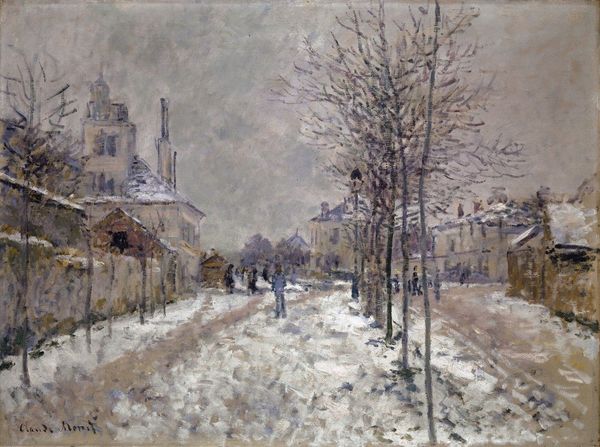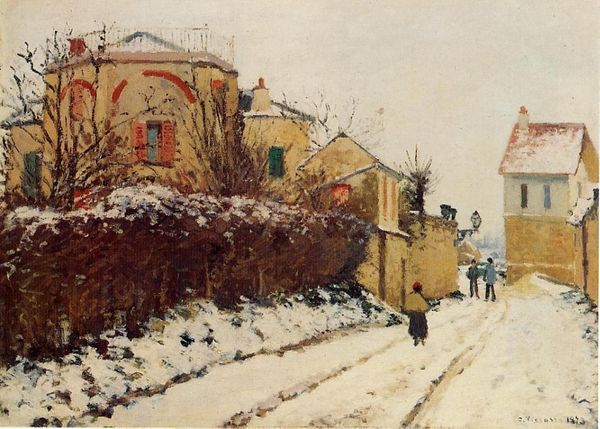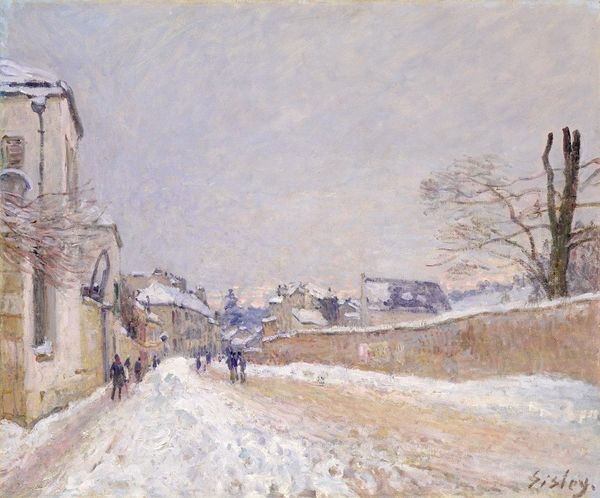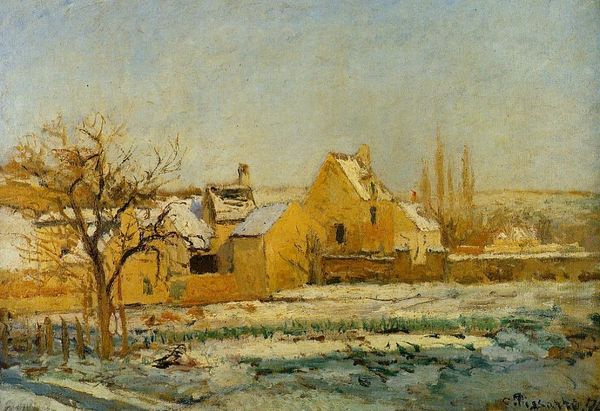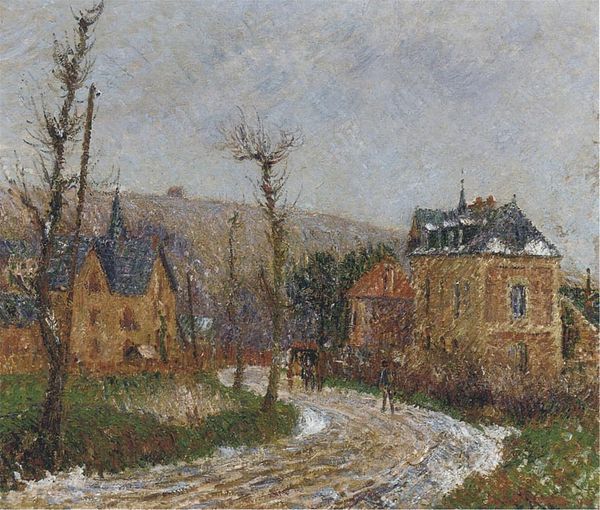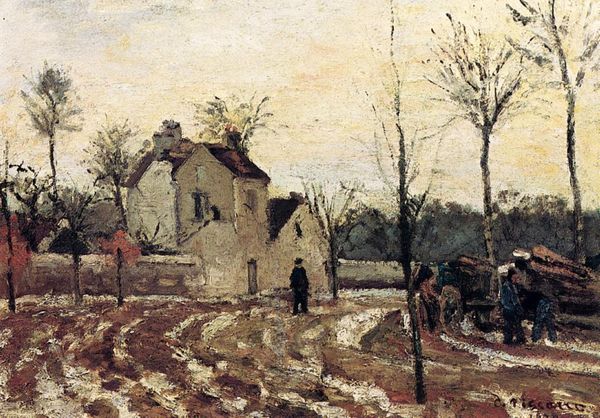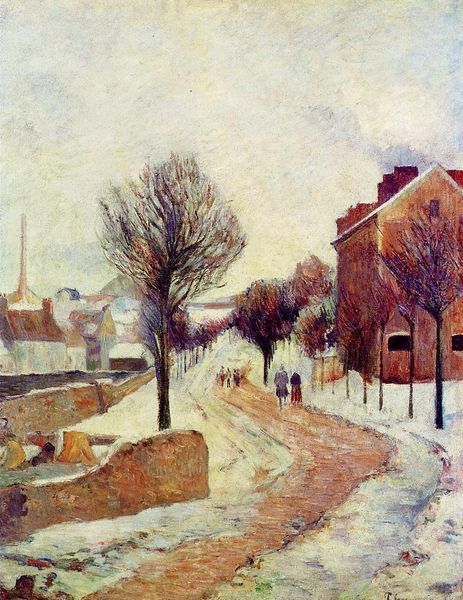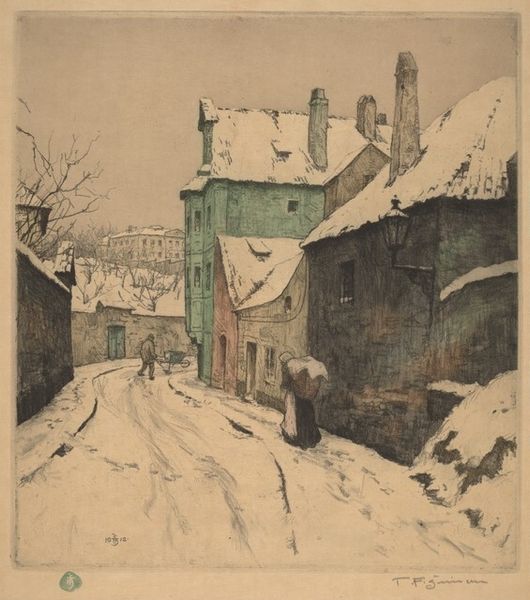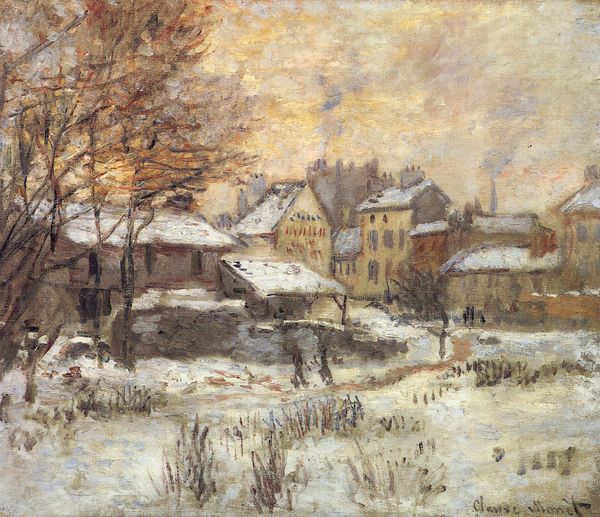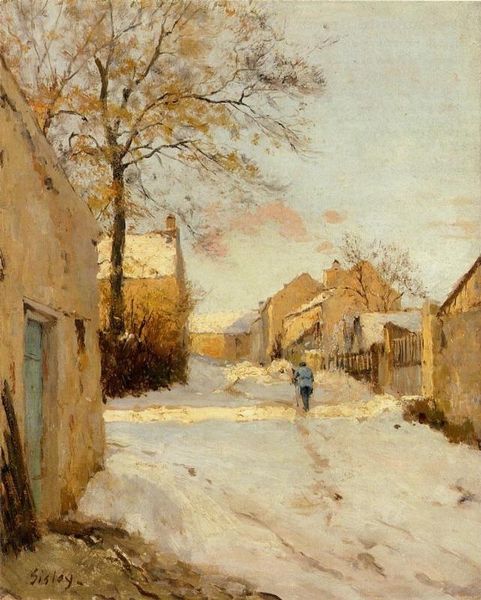
Copyright: Public domain
Editor: So, this is Ion Andreescu's "Winter at Barbizon," painted in 1881. It looks like it's done in oil paint, capturing a snow-covered street. The mood is very serene, almost melancholic, and the composition directs my eye right down the road. What catches your attention in this piece? Art Historian: Immediately, I’m struck by the symbolic weight of winter itself. What does winter signify in our collective memory? Death? Hibernation? Here, Andreescu uses it to perhaps represent a period of artistic quietude or reflection. Do you see how the bare trees act as visual metaphors, stark against the softened buildings? Editor: That's interesting. I hadn’t really thought about the winter setting as being symbolic, more just… descriptive. But the bare trees *do* emphasize the cold and stillness. How does that stillness tie into the “Barbizon” part? Art Historian: The Barbizon school focused on direct observation of nature. Look closer, the way he layers brushstrokes… isn’t there almost a primal feeling present? Barbizon became this haven where painters found something almost mythic in rural life. Andreescu captures the shift: romanticism transforming into something we now recognize as impressionism. Editor: So, the location itself contributes to the overall meaning, connecting it with the earlier artistic movement. It does seem like a meeting point for something old and new. What did the "winter" of that movement lead into? Art Historian: Perhaps a spring. "Winter in Barbizon" doesn't signify only hibernation, but maybe it is also about a potent, transformative, but quiet incubation that helped modern art eventually flourish. Editor: I never would have looked that deeply into the landscape like that. I'll need to spend a lot more time observing symbols and how they transform.
Comments
No comments
Be the first to comment and join the conversation on the ultimate creative platform.
